Daniel R. Snyder
Director, Applications Engineering
SKF Bearings, Inc.
Kulpsville, Penn.
Rolling bearing reliability is particularly critical in electric motors, fans, blowers, compressors, and pumps. They reduce friction, support shaft loads, locate shafts, and make systems more rigid. Each rolling bearing type has properties that make it most appropriate for a particular application. For example, deep-groove ball bearings handle some radial as well as axial loads. They are high-precision bearings with low friction properties and run quietly. For these reasons, they often are specified for small and medium-size electric motors.
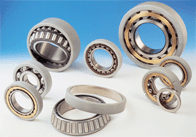
Coatings can impart additional features for specific application conditions. One of the most important is the use of a thin aluminum oxide layer to form a barrier against electric arcing, which leads to premature bearing failure.
Spherical and toroidal roller bearings are self-aligning and can carry extremely heavy radial loads. These properties also help moderate shaft deflections and misaligned components. The appropriate bearing depends on loading, misalignment, precision, speed, system rigidity, and axial location. Materials used for rolling bearing rings, rolling elements, and cages can affect their reliability and service life.
Loading
The magnitude of the load is one of the most critical factors to consider when sizing bearings. Generally, roller bearings can support heavier loads than ball bearings and caged bearings of similar size. Ball bearings typically are used where loads are relatively light or moderate. Roller bearings should be used for heavy loads and large shaft diameters.
Certain cylindrical roller, needle roller, and toroidal roller bearings can support only radial loads, while all other radial bearings also handle some axial loads. Thrust ball bearings and four-point contact ball bearings handle only light to moderate axial loads. A bearing’s ability to carry an axial load is determined by the angle of contact or load action internal to the bearing. Angular contact ball bearings can support some axial loads at relatively high speeds. For other axial loads acting in one direction, spherical roller thrust bearings or taper roller bearings are the best choice.
Radial and axial loads acting simultaneously are called combined loads. The most common bearings used here include single and double-row, angular contact ball bearings, and single-row, tapered ball bearings. Deep-groove ball bearings depend on the load magnitude and ratio of axial to radial loading.
When the axial component of combined loads is especially large, a separate bearing may support it independently from the radial load. In addition to thrust bearings, some radial bearings, such as deep-groove ball bearings or four-point contact ball bearings, can handle this task.
A load acting eccentrically on a bearing produces a tilting moment. For these loads, consider double-row bearings. Suitable options include deep groove, angular-contact ball bearings; spherical roller bearings; paired single-row angular contact ball bearings; or tapered roller bearings arranged face-to-face or back-to-back.
Bearings must always have a minimum load for the elements to move properly and sufficient lubricant film in rolling contact areas to minimize friction. Otherwise, the elements will skid, degrade the lubricant, and generate high operating temperatures. A general rule of thumb: roller bearing loads should be about 0.02 times the dynamic radial load rating, and ball bearing loads should be about 0.01 times the dynamic radial load rating. These ratings are particularly critical for high accelerations and speeds that
are about 75% of the maximum ratings.
Misalignment
Shafts that bend and flex under operating loads, bearing seats that are not the same height, and shafts supported by widely spaced bearing housings can go out of alignment. Rigid bearings such as deep-groove ball bearings and cylindrical roller bearings can counteract only minor misalignments.
Various types of self-aligning rolling bearings, including spherical roller bearings, toroidal roller bearings, and self-aligning ball bearings work well when operating loads or errors in machining or mounting produce the misalignment. Tolerable misalignment values for most bearing types should be available from the manufacturer.
Precision and speed
When machinery needs high accuracy at high speeds such as machine tool spindles, specify high-precision bearings. Dimensional and running accuracy tolerances of rolling bearings have been standardized internationally. Tolerance classes offer a reliable guide for specifying the proper high-precision bearings for the application.
Rolling bearings have a top-speed rating. Generally, the maximum lubricant operating temperature or the specific design and material of the bearing components govern the permissible speed. First, check out thermal reference speeds for a given bearing type. But bearing type, size, internal design, precision, load, cooling, cage design, accuracy, and internal clearance, also influence the speed capability of a bearing.
Bearings may operate at speeds above the reference speed only when bearing friction is reduced by using lubrication systems that dispense small, accurately measured quantities of lubricant, or when heat is removed, typically by using circulating oil lubrication either with cooling ribs on the housing or with directed cooling air streams. In some cases, changes in component designs and materials to suit the application can boost permissible operating speeds.
Stiffness
The stiffness of a rolling bearing is similar to the stiffness of a spring and is characterized by the magnitude of the elastic deformation (resilience) in the bearing under load. In general, this deformation is extremely small and can be neglected. In some cases, however, stiffness is critical, such as in spindle bearings for machine tools or pinion-bearings in automotive axle drives.
In general, the contact integrity between rolling elements and raceways in roller bearingsprovide a higher degree of stiffness compared with ball bearings, but applying a preload can increase bearing stiffness.
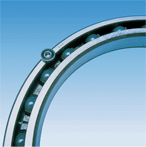
Depending on the application, the components of a bearing can be made of different materials. For example, the ball rolling elements can be made from a ceramic while the remainder of the bearing is composed of steel materials.
Preload
In addition to increasing system stiffness, a bearing preload can reduce running noise, improve shaft guidance accuracy, compensate for wear and settling, and extend service life because it basically imposes a negative operational clearance in a bearing.
Preload also should come into play when bearings operate without any load or under very light load at high speeds. In these cases, the minimum preload prevents roller elements from sliding and damaging the bearings.
Depending on bearing type, the preload may be either radial or axial. Cylindrical roller bearings can only be preloaded radially. Thrust ball bearings can only be preloaded axially. Single row angular contact ball bearings and tapered roller bearings are also preloaded axially. Springs, washers, friction torque, direct force, and certain kinds of adjustments are a few common techniques for applying preloads.
Materials
The materials used for bearings directly affect their performance and reliability. For bearing rings and rolling elements, typical material properties to specify include hardness for load-carrying capacity, fatigue resistance under rolling contact conditions, and the dimensional stability of bearing components. For cages, consider friction, strain, inertia forces, and, in some cases, the chemical effects of lubricants, solvents, coolants, and refrigerants.
A variety of materials, processes, and coatings have been engineered to address these factors.
• Materials for Bearing Rings and Rolling Elements: Through-hardened bearing steels, such as carbon chromium steel, normally receive a martensitic or bainitic heat treatment for hardening to 58 to 65 HRC. Within the past few years, process developments for this steel have reduced oxygen and non-metallic elements, improved properties, and contributed to an entirely new class of bearings. Through-hardened steels are used for almost all ball bearings and extensively in smaller roller bearings.
Case-hardening bearing steels consist of chromium-nickel and manganese-chromium alloyed steel and constitute the most commonly used conventional material for standard rolling bearings that require high toughness or shock loading. In applications with high tensile hoop stress from interference fits and high shock loads, bearings with carburized rings and/or rolling elements also should be considered.
For operating temperatures to 250°C, a special heat treatment for bearings made from hardened or surface-hardened steel can be applied. However, this can reduce hardness and load-carrying capacity.
For bearings operating at temperatures higher than 250°C for extended periods, highly alloyed high-temperature bearing steels retain hardness and bearing performance characteristics.Bearing grade ceramics, such as silicon nitride, have gained favor in some applications due to high hardness, low density, low thermal expansion, high electric resistivity, low dielectric constant, and no response to magnetic fields.
For bearings where corrosion may develop, stainless bearing steels, such as chromium or chromium/molybdenum stainless, provide a measure of protection. Their reduced hardness, however, lowers load-carrying capability compared with conventional steels. In addition, corrosion resistance is only effective when the entire surface is perfectly polished and not roughened or damaged during mounting.
• Cage Materials: Most pressed sheet steel cages are made from continuously hot-rolled low carbon steel. These lightweight cages have relatively high strength and can be surface-treated to reduce friction and wear.
Machined steel cages are normally manufactured from non-alloyed structural steel and can be surface-treated to improve sliding and wear resistance. These cages are usually specified for large-size bearings or as substitutes for bronze cages in applications where there is a potential for season cracking caused by a chemical reaction. They perform at operating temperatures to 300°C and are unaffected by rolling bearing minerals, synthetic oil-based lubricants, or the organic solvents used to clean the bearings.
Most brass cages are robust and machined from a cast or wrought brass that withstands most common bearing lubricants and normal organic solvents. These cages, however, are not for applications where temperatures may exceed 250°C.
Polyamide polymer cages, with or without glass fiber reinforcement, deliver strength and elasticity, but cage life may decrease over time with increasing temperatures and aggressive lubricants, depending on the particular grade of polyamide material.
Polyether either ketone (PEEK) glass fiber-reinforced cages are able to stand up to high speeds, chemical attack, or high temperatures.
Certain types of coatings let designers upgrade bearing materials for additional features for specific application conditions within designated parameters. Noteworthy examples include a low-friction coating applied on a bearing’s inner surfaces. Compared with standard uncoated types, such bearings become harder, generate less friction and heat, and can better tolerate minor damage from contamination and marginal lubrication. They are better equipped to resist wear, operate at higher speeds, accommodate higher loads, and perform even during periods of insufficient lubrication.
Another coating can be applied to the exterior of a bearing’s outer or inner ring to resist potential damage from electric current through the bearing. A thin aluminum oxide layer forms a barrier against electric arcing, which can cause fluting damage to rollers and raceways or oxidation to grease.

The CARB toroidal roller bearings act as non-locating, self-aligning bearings in industrial fans. They compensate internally for angular misalignment and accommodate axial shaft expansion, eliminating outer ring loose fits or axial slide housings. They are quiet, cool-running bearings and are less-sensitive to high-temperature shaft expansions and flat mounting surfaces.
Exploring the ranges of bearing capability
Perhaps as a logical extension of all thetechnologies and engineering available to designers and users, a new performance class of rolling bearings has emerged. The Explorer class of bearings may last up to 300% longer in applications than standard bearing products.

The Explorer offers most sizes and types of spherical roller bearings, angular contact ball bearings, cylindrical roller bearings, spherical roller thrust bearings, taper roller bearings, deep groove ball bearings, and four-point contact ball bearings are included. More are on the way. All are dimensionally interchangeable with standard products.
The features and benefits of this class of bearings are: ground transition raceways/shoulders that deliver higher thrust load capability, lower overall contact stresses, and reduced edge stresses for increased power density, load rating, and safety. Modified polyamide/brass cage geometry promotes higher speed ratings and acceleration, lower heat generation, and reduced vibration and noise.
Upgraded balls and rollers offer improved running accuracy. A unique heat-treating process minimizes dimensional changes on balls made from steel with low oxygen content. State-of-the-art techniques extend life and reduce fatigue failure.
SKF
www.skfusa.com
Filed Under: Factory automation, Bearings, Motion control • motor controls

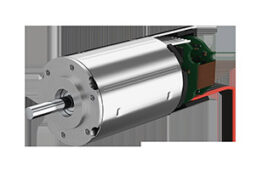
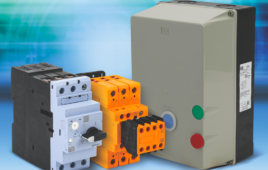
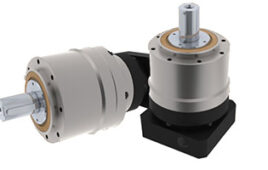
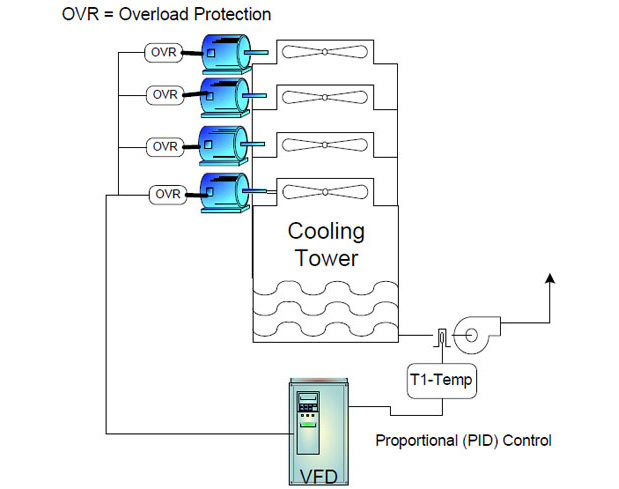
Sir,
Thank you for your article.
1) what are the temperature limits of the polymer cages ?
2) is it true ceramic hybrid bearings perform significantly better in marginal lubrication environments and fluctuating dynamic loads ?
3) how available are they and at roughly what premium ?
I want to know the suitability of bearing with polymide cage for a planetary gearbox for which life is expected to be 50 000 to 60 000 hours.